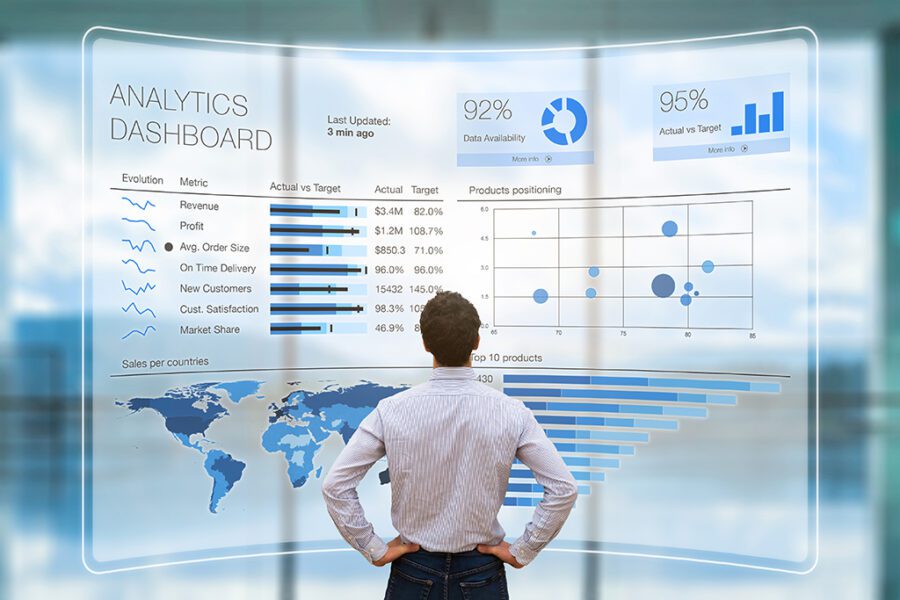Data is the most important asset of modern business. It can help or break an organization. To maximize the potential of data, companies use powerful tools such as Power BI and Microsoft Fabric. These platforms form the basis of business intelligence. And when they are combined with Azure Data Factory, they become an unstoppable force in data analytics and decision-making.

Power BI Your Business Intelligence Companion
Power BI, a service of Microsoft, is a comprehensive business intelligence tool created to help organizations visualize and share information from their data. Power BI allows users to build interactive dashboards and reports, transforming raw data into actionable information.
Whether you’re a small startup or a large enterprise, Power BI adapts to your needs. It connects to multiple sources of data, making it easier for users to consolidate the data from different platforms and databases. Even non-technical users are able to quickly create meaningful reports and analyses using its simple drag-and-drop interface.
Power BI’s platform allows for instantaneous data processing. This guarantees that you’re working with up-to date information. It offers a wide range of graphs and visualizations that allow the presentation of data in a digestible, compelling manner. It is crucial to communicate and collaborate on reports. This will help improve decision-making within your company and create a more data-driven work environment.
Microsoft Fabric The weaving of data Excel
Microsoft Fabric is an underlying framework that integrates and orchestrates information from several Microsoft services. Fabric is the thread that ties your data into a unified, usable entity, enabling companies to get insights easily.
Microsoft Fabric helps businesses maintain the integrity of their data as they handle increasing volume of data. Microsoft Fabric incorporates a range of services, including Azure Data Lake Storage (Azure SQL Data Warehouse), Power BI, and a host of others. This connectivity ensures that information is flowing smoothly and that information can be derived from a variety of sources.
Microsoft Fabric excels in data transformation. It can be used to wrangle data, cleanse and prepare it for analysis and ensure it adheres to the company’s policies on data governance. Microsoft Fabric ensures that your data is correct, reliable and ready for analysis.
Azure Data Factory – The Gateway to Data Transformation
Azure Data Factory is another essential component in the modern business intelligence landscape. It is a cloud-based solution that allows you to manage and schedule data-driven processes. Azure Data Factory provides meaningful insight through the orchestration of data movement and transformation.
Azure Data Factory offers many advantages, such as its capability to connect to many data sources. Data can be integrated effortlessly, whether on-premises, in the cloud or both. This will give you complete visibility of your entire data ecosystem regardless of where your data is located. The platform can handle batches of processing, real-time data streams and big data analytics. This makes it suitable for many applications.
Azure Data Factory provides a visual interface to ease the process of designing data pipes. It is easy to create the schedule, monitor, and plan data workflows even if you’re not a coding expert. This lets users be in control of data integration as well as self-service data prep.
Power BI with Microsoft Fabric, Azure Data Factory, and Power BI
When Power BI is combined with Microsoft Fabric and Azure Data Factory, they form an exciting trio that can revolutionize data analytics. How do they interact?
1. Data Integration: Azure Data Factory is able to connect with various data sources. This ensures that all data you have are available. The ability to integrate data feeds into Microsoft Fabric, which orchestrates data across a variety of services. This means that your data is well-structured, cleaned, and ready to be analysed in Power BI.
2. Data Transformation: Microsoft Fabric is a essential component of data transformation. It lets you transform your data to meet your preferences. If it’s data-wrangling, cleansing, or transforming the data, the fabric guarantees that the data is in good shape for meaningful insights.
3. Power BI will take over when your data has been perfected and is ready. It allows you to create visually appealing reports and dashboards which make complicated data easier to comprehend. You can then communicate these insights to encourage your team to make informed decisions using data.
4. Scalability: Azure Data Factory is scalable to meet growing amounts of data. Power BI combined with Microsoft Fabric can provide accurate data as your business grows.
5. Real-time Insights: Using real-time data processing capabilities, Power BI and Azure Data Factory offer up-to-date information that are vital to make quick and informed decisions.
The end of the article is:
Business intelligence is evolving rapidly and organizations need to harness data’s power to remain competitive. Power BI, Microsoft Fabric, and Azure Data Factory offer a powerful set of tools that can take your business intelligence efforts to new heights. You can create amazing visualizations, maintain that your data is consistent, or speed up processes for data, this trio has you covered. Utilize the power of business intelligence and unlock the potential of your data.
